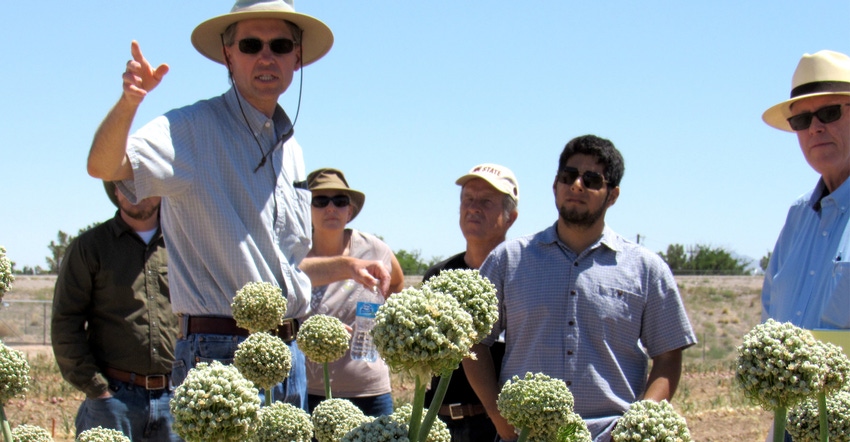August 30, 2018

New Mexico State University Professor of Horticulture Christopher Cramer is one of 15 participants in a regional multistate research working group to receive the 2018 Western Region Award of Excellence in multistate research.
The multistate research covered the managing of onion pests and diseases and included the help and research of numerous universities, Cornell University, Texas A&M University and Colorado State University to name a few.
Cramer’s research aimed to identify onion germplasm that could be used to breed onions with resistance to onion thrips. Onion thrips are insects that feed on plant leaves, damaging onion bulbs and spreading disease that could take a toll on onion yield, quality and seed production.
“We evaluated some onion germplasm and selected plants that thrips did not prefer as much as other plants and as a result those plants suffered less damage from thrips,” said Cramer, professor in the Department of Plant and Environmental Sciences. “We also evaluated the same germplasm for damage from a viral disease, iris yellow spot. We identified plants that exhibit fewer disease symptoms than other plants. The virus that causes this disease is spread by thrips.”
Professors from the working group meet on an annual basis to discuss the research they are doing and see how they can coordinate their efforts. Multistate research projects can help to make sure many different issues are being researched at once.
“It is helpful to have multiple research projects happening at once because there might be pest and disease issues that are important here in New Mexico that we might not have time to work on but maybe in another state they are working on it currently, whether it would benefit them to also work on it or not. So, it helps to make progress in research that can be applied in different places,” Cramer said.
By participating in multistate research projects, NMSU has been put on the map as a productive contributor to needed research.
“By being able to contribute what we’re doing to other states and seeing what other states are doing, it’s building a great partnership for future projects,” Cramer said.
Source: NMSU
You May Also Like




